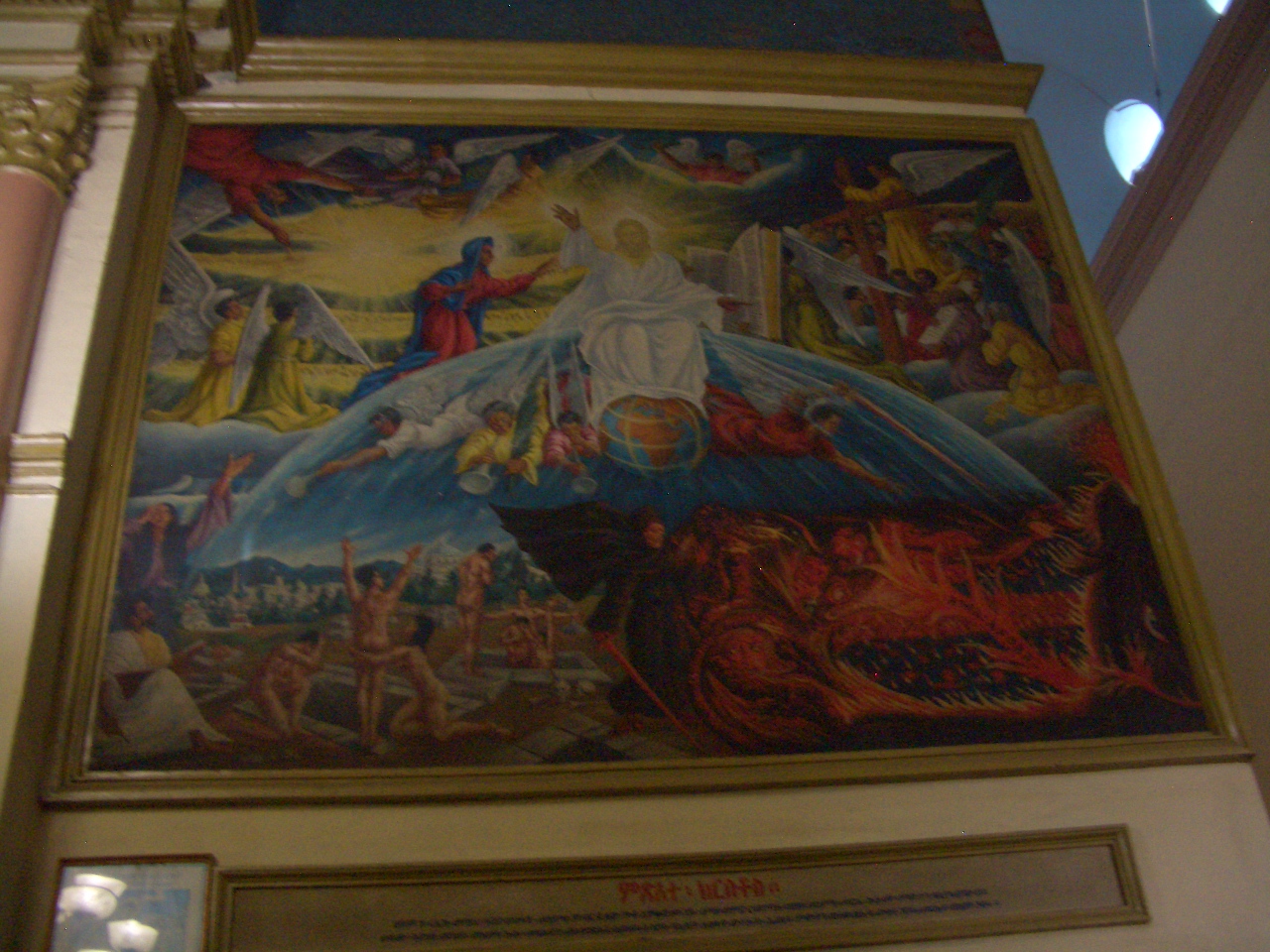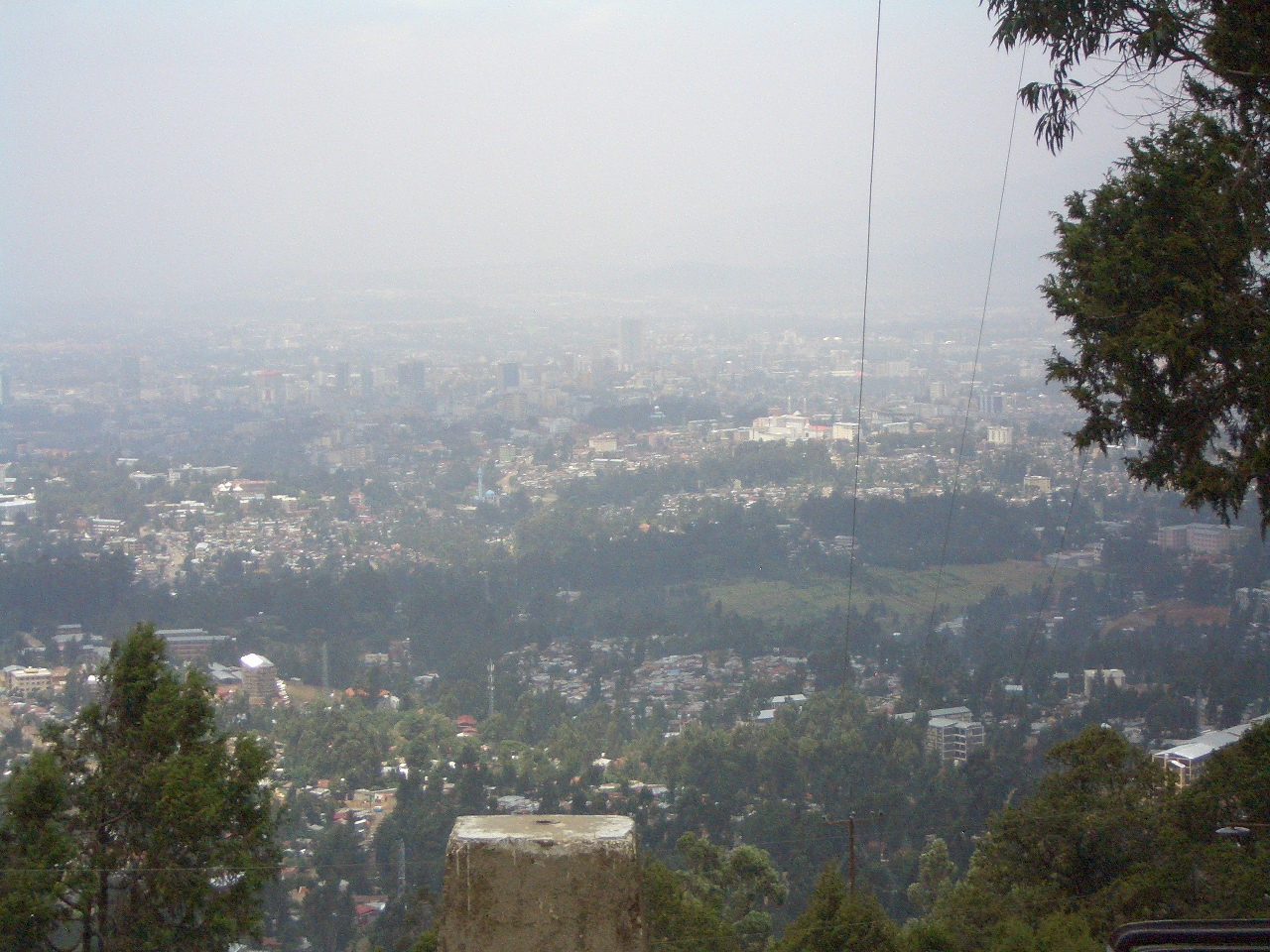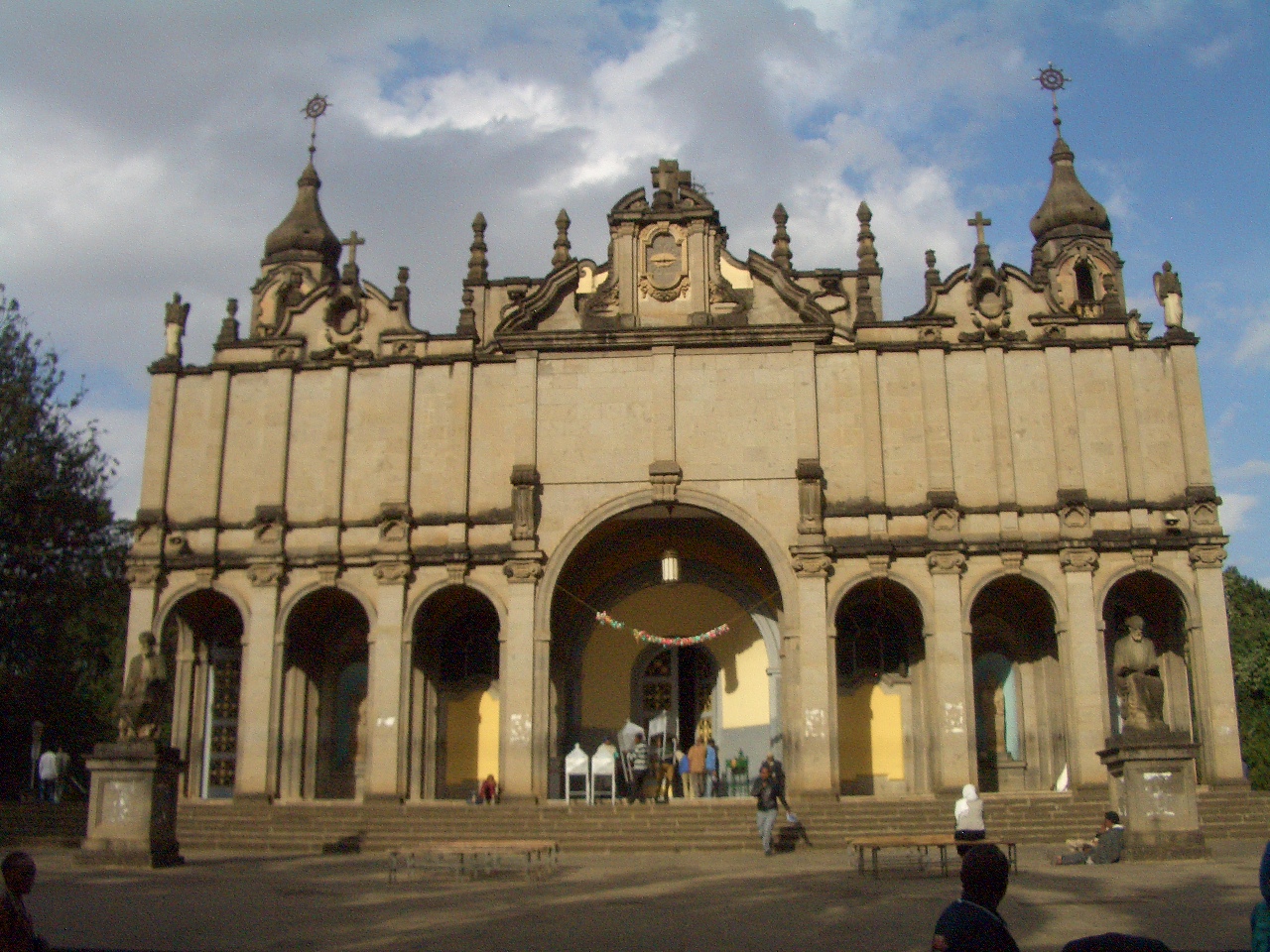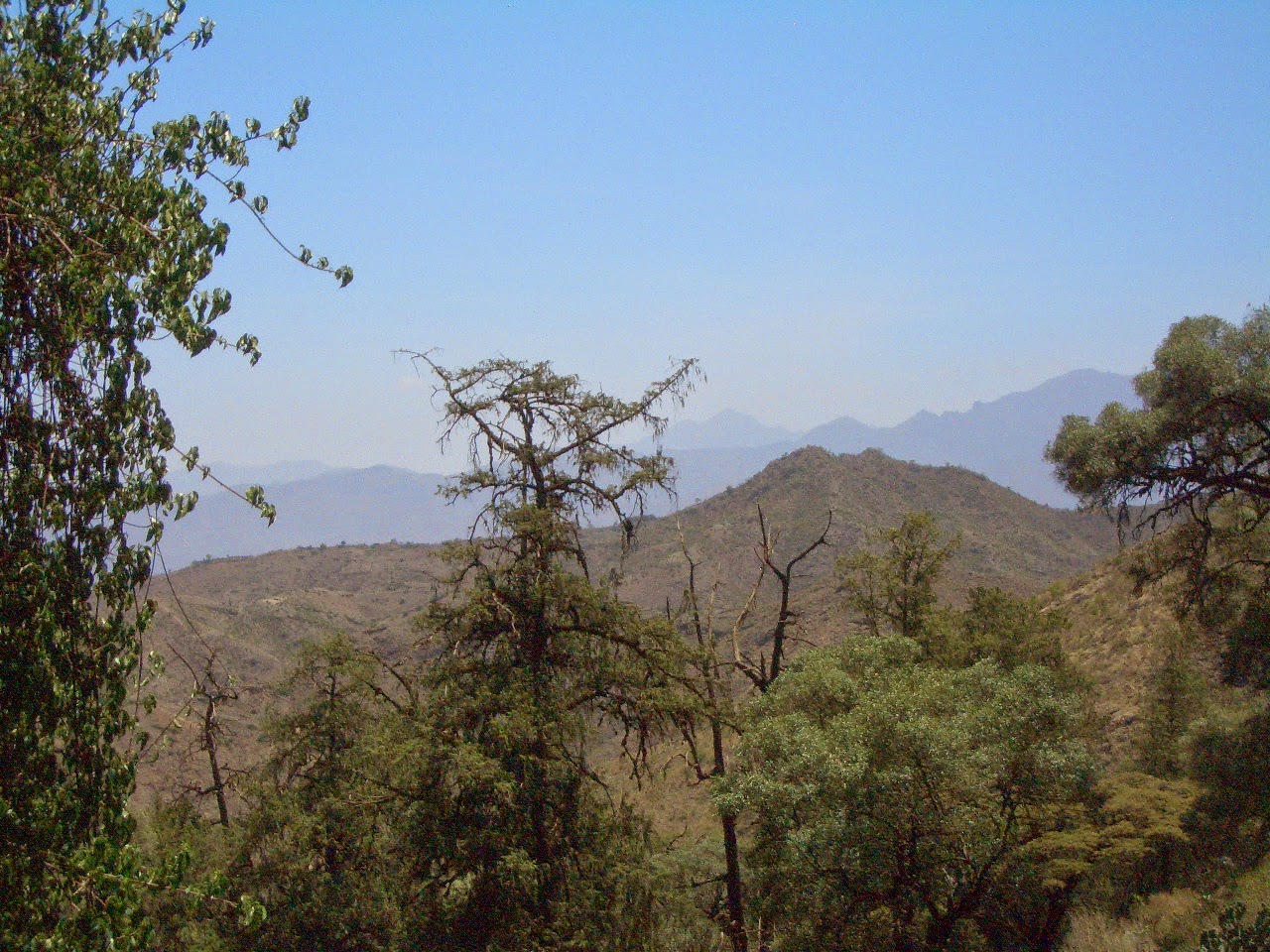Day Two
Addis Ababa
Our second day in the Ethiopian capital was dedicated to a celebration of both the religious and political history of Ethiopia, at least since the founding of Addis Ababa, the capital in the 1880’s. The day started with a visit to St. George’s Cathedral. this was the first time I have ever been inside of an Ethiopian Orthodox Church, or really any Orthodox church save Russian. The layout is vastly different from the traditional protestant church and even from the basilica format common in many Roman Catholic churches. The structure is an octagon and the outside of the church is considered holy as well and many worshippers will come and prostrate themselves in prayer on the outside wall, sometimes even kissing it. There are also a number of entrances and each are for a particular group of people. The priests enter on the side closest to an outside structure on the eastern side which is used to prepare the elements for Holy Communion. During the mass, the men and women enter on opposite sides of the church. Shoes are to be removed and women are to keep their heads covered. Upon entering, one finds three concentric circles. The outer circle is where the music is played, consisting of chants with accompanying drums. Men sit on the inside of the outer circle while women sit on the outside of the outside circle. The second circle is for the priests and deacons and is where Holy Communion is served. Regular parishioners cannot enter this area during the mass. The third circle, the innermost, is where one finds the holy of holies. Only certain priests are allowed to enter and even view this area. There is a curtain keeping the contents out of the view of all who are not allowed to enter. However, while there are a few different things that can be found there, one requirement is a replica of the Ark of the Covenant. Each church must have one of these, except for the main church in the city of Axum which supposedly holds the actual Ark of the Covenant, which according to legend was brought to Ethiopia by the son of King Solomon and the Queen of Sheba
 |
| Priest demonstrating the use of the ceremonial drum used in chanting. |
.
 |
| Here you can see the outer circle of the cathedral with men sitting on the inside and women, with head coverings, sitting on the outside of the outer circle. |
 |
| Amazing picture in St. George's Cathedral showing judgment, heaven, earth, and the Kingdom of God. |
Our day then took us to the top of Mount Entoto, the highest point in Addis Ababa. On the top of the mountain is where the Emperor Menilek II lived with his wife, the Empress prior to moving down into what is now the city and founding Addis Ababa in the 1880’s. The mountain today houses what used to be their palace and church. In addition, the mountain is covered with Eucalyptus trees which were brought to Ethiopia from Australia as they grow fast and could provide wood for construction quicker than the indigenous plants could. Many women climb up and collect fallen branches and bind them together and then carry them down into the city to sell for construction materials. The view of the city was amazing.
 |
| Church at top of Mount Entoto where the Emperor Menelik and his wife lived prior to the founding of Addis Ababa. |
On the way back down we stopped at a market area and looked around at the various shops. Carl, Jason, and I sat down a local bar and had some Fanta (the orange soda) before we continued down to the city where we enjoyed lunch at an amazing Italian restaurant.
 |
| Taken from the top of Mount Entoto looking down into Addis Ababa. |
 |
| Haile Selassie's Cathedral and location of the tomb of both Emperor Selassie and his wife. |
The afternoon took us to the office of the Patriarch of the Ethiopian Orthodox Church. (This would be parallel to the Pope in the Roman Catholic Church). The office contains a museum full of many paintings recounting the story of the Church from the very beginning up to the present. The current Patriarch is rather new as the former Patriarch died two years ago. The museum showed how the previous Patriarch really tried to form connections with other Christian traditions and there were pictures of various religious and political leaders who had met with him over the years. There were a number that I didn’t recognize as they were the leaders of various Eastern Orthodox traditions, however, there were a number of pictures with both Pope John Paul II as well as Pope Benedict XVI. Other dignitaries included Syrian president Bashar al Assad (yes, I know it is a huge stretch of the imagination to call him a dignitary, but the picture was from the late 90’s or early 2000’s before the Syrian Civil War), the presidents of Lebanon, Germany and Bill Clinton.
Following this we went to the Cathedral that was built by the Emperor Haile Selassie and which is also where both the late Emperor and his wife are buried. The cathedral is in the basilica format but still contains the three sections found in the other churches. The place where normally the congregation would sit also serves as the place where the chants are sung. The area where the priest would normally stand in the Western tradition is reserved for the Priests and Deacons and the important people, including a special throne for the Emperor and Empress. Finally, the Holy of Holies is behind this area and walled off by a curtain, past which only certain priests may pass.
In the naves of the church, men are given the nave on the left side of the church if you are facing where we would place the altar and the women have the right nave for prayer. In this church, the left nave also includes the tomb of Haile Selassie and his wife. The question was posed to our guide about Rastafarians and how their views of Haile Selassie differ from traditional Ethiopian Orthodox views. I didn’t realize how very different the two theologies were. For the Ethiopian Church, Haile Selassie was the Emperor, a benefactor of the church and was crowned with the approval and support of the Orthodox structure, but at the end of the day he was a man, no more divine than anyone else. Rastafarians, the name taken from the name of Haile Selassie before becoming emperor, Ras (a title of rank, similar to Duke) Tafari, believe him to be the “black messiah.” It makes sense when one thinks that much of Rastafarianism came about in the Caribbean in the 1960’s and slightly before when many Caribbean nations were becoming independent from their colonial powers. Ethiopia was the one country in Africa that was never truly colonized by any European power, especially not in the way much of the rest of the world was. So, for Rastafarians, Haile Selassie was the Black Messiah, a representation of Black power at a time when many in the post-colonial world were facing a crisis of identity, fighting for power in a world structure that had racism as one of it’s underlying political, economic, and theological foundations. There are some Rastafarians in Ethiopia, but their numbers are very small compared to the larger numbers seen in the Caribbean, specifically in Jamaica.



















